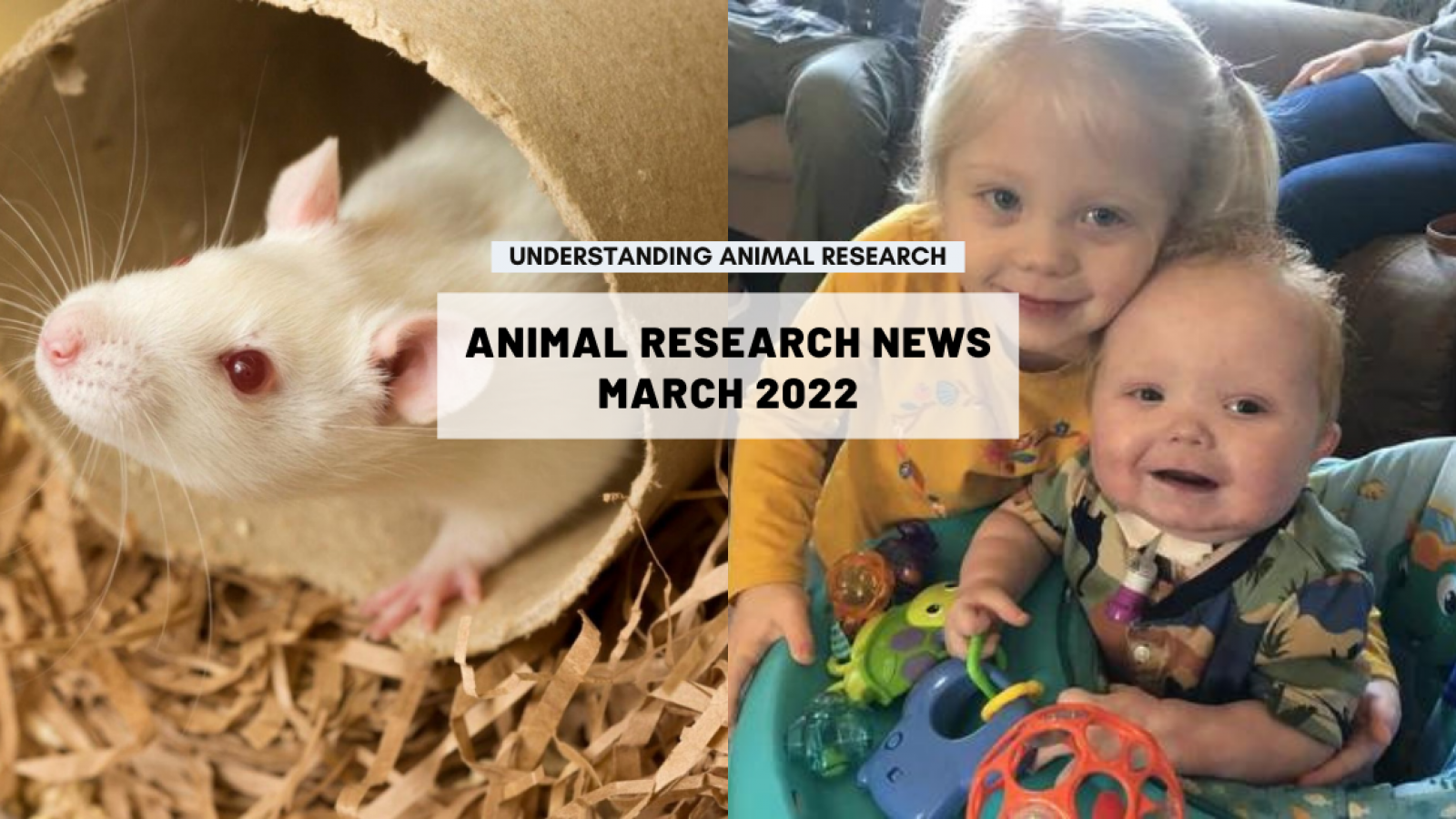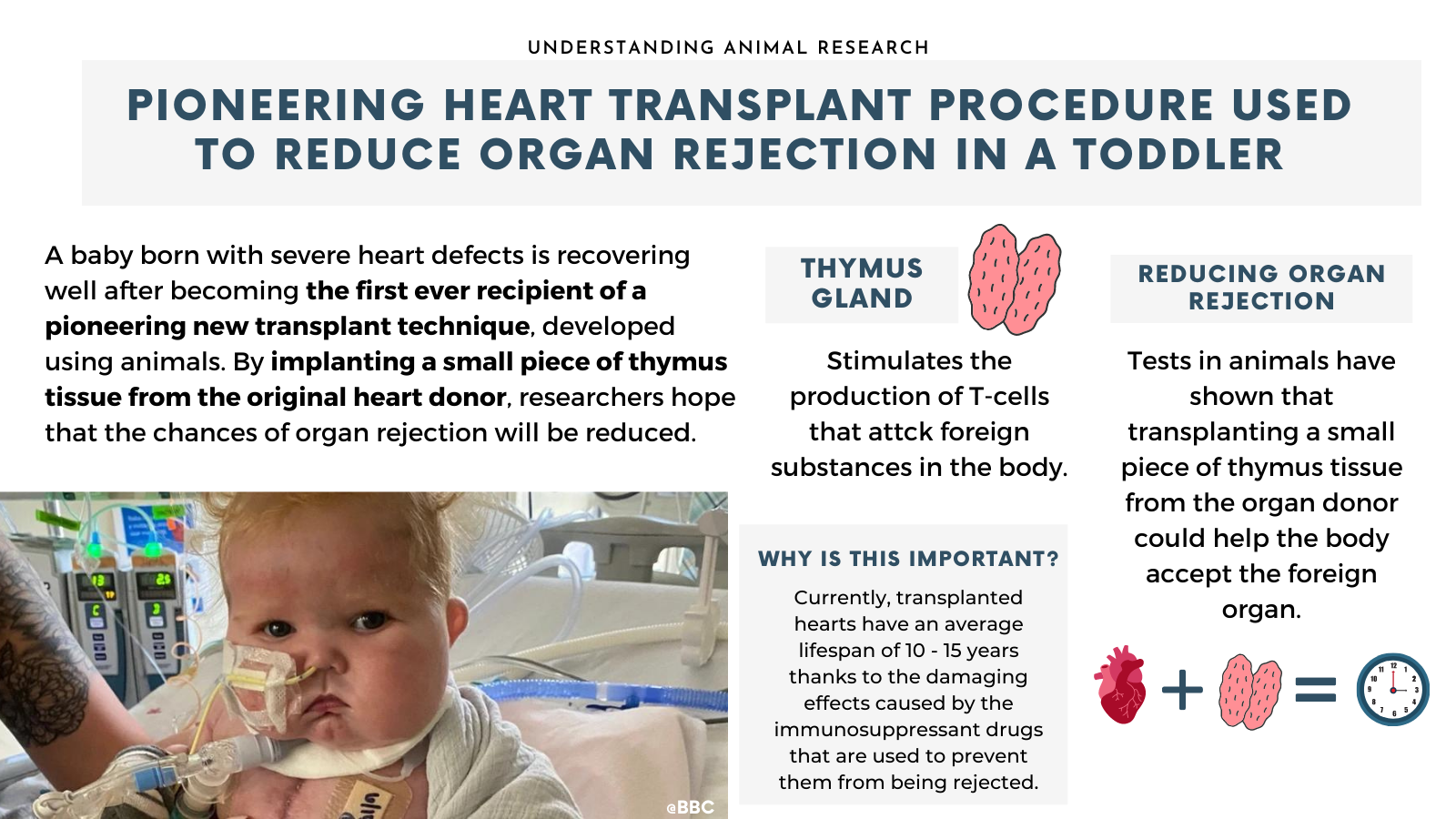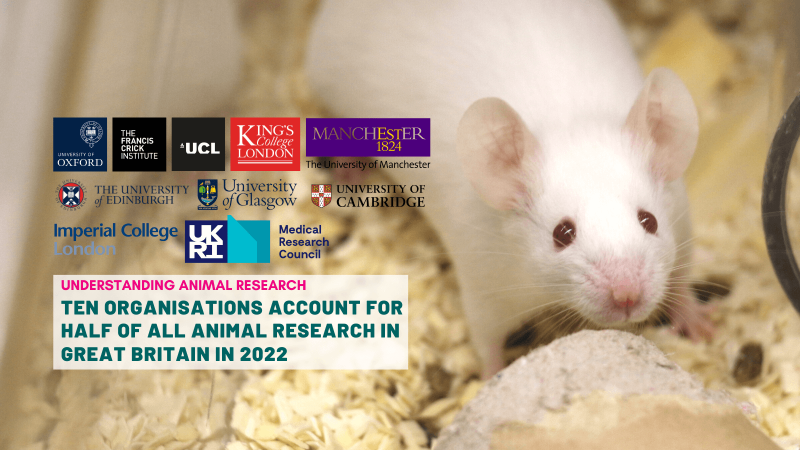
First-ever heart and thymus transplant
This month it was announced that a baby had become the first person in the world to receive a combined heart and thymus transplant.
Baby Easton was born with a weak heart and problems with his immune system. He spent time on life support and needed numerous heart operations and treatment for infections his body could not fight on its own. In August 2021 the FDA granted special permission for doctors to carry out a combined heart and thymus transplant, an experimental surgery that hadn't been done in combination before, to help save his life.
Not only does the thymus gland make T-cells, which help fight foreign substances and infection, but research in mice has shown that transplanting a small piece of thymus tissue from the heart donor helps the body accept the foreign heart, thus preventing organ rejection.
Six-month-old Easton was transplanted with thymus tissue that came from the heart donor and months on from surgery, he is progressing well.
Transplanted hearts have an average life span of 10 to 15 years due to damage caused by immunosuppressant drugs that work to prevent the body from rejecting the foreign organ. But researchers hope that the chances of organ rejection will be reduced due to the thymus transplant building critical immune cells, which will hopefully reduce or even eliminate the need for Easton to take lifelong anti-rejection drugs. The medical team plan to wean Easton off the immunosuppressive drugs at some point, to see how he progresses.
Source: BBC

Reversing ageing in mice
Researchers in the US treated healthy mice with a form of gene therapy that refreshed older cells, making the animals more youthful according to biological markers that are used to measure the effects of ageing. The findings will fuel interest in radical new therapies that aim to slow or reverse the ageing process as a means of tackling age-related diseases such as cancer, brittle bones and Alzheimer’s.
Source: Guardian
Pioneering technique rids mice of bowel tumours
An experimental treatment has been found to eradicate cancer in mice within just six days.
The treatment involves implanting pinhead-sized beads near the site of a tumour, in mice with advanced ovarian or colorectal cancer, in a one-off minimally invasive surgery. The capsules sit in fluid around the tumour and deliver a continuous high dose of interleukin-2, a protein that activates immune cells to detect and fight cancer, that is already approved for use as a cancer treatment.
This new technique will allow doctors to deliver higher concentrations of interleukin-2, which would normally cause nasty side effects when delivered intravenously, to target very specific tumour locations, without being extremely toxic to the body.
Source: Daily Mail
Brain Prize awarded to mice research
The 2022 Brain Prize has been awarded to an international group of researchers for their pioneering work in understanding how neurons in the spinal cord and brain stem control movement and posture.
Part of the research involved using mice to understand how animals, including humans, control movement of the arms and hands during food handling, while other work using rodents helped identified which cells are responsible for the control of speed and rhythm of movement.
This research helps improve understanding of how movement is lost, in conditions such as Parkinson’s and Motor Neuron Disease.
Source: EARA
More female research animals
UKRI, one of the UK’s major funding bodies, has announced that from now on grants will only be awarded to animal research projects that use both sexes unless a ‘robust justification’ is given.
While women represent around 50.6% of the UK population, a recent survey conducted by the found that only 44% of MRC grant applications specified the sex of their animals, tissues or cells. Of these, only 56% justified their choice of sex and only 54% of applications planned to use both male and female animals.
A common concern is that female animals are more variable than males due to their reproductive cycle, however, a recent analysis has shown that this is incorrect. Instead, a lack of female representation in both animal studies and human clinical trials has led to drugs and treatments that are inadequate for women. UAR has previously written about the need for more female mice in research.
UKRI has also stated that “using appropriate statistical analyses one can examine sex differences without a considerable increase in animal numbers”.
Source: UKRI
Learning to walk again
You may recall that in February’s news we wrote about how Michel Roccati had been able to work again thanks to a spinal cord transplant. We have now written an article about the animal research that led up to this monumental surgery.
Article: Learning to walk again: the history of spinal cord implants
First-ever pig to human heart transplant patient dies
Unfortunately, Mr Bennett, the first-ever recipient of a genetically modified pig heart transplant (that we spoke about in the January news), passed away on 8 March 2022.
The first-ever recipient of a pig-heart transplant died two months after his surgery. While it is not clear what the exact cause of Mr Bennett's death is, this experimental surgery always presented a risk and was only approved as a final treatment option. Further investigations will determine the next steps in this critical research to solve the global shortage of transplant organs.
What are the most used animals in research?
Watch our latest video to find out which three animals are most used in British scientific research, and why.
Tuberculosis and women in science awareness
This month we recognised World TB Day and International Women’s Day.
This International Women’s Day we highlighted the gender gap in heart disease research and looked at why the survival rates for women who have had a heart attack are worse compared to men.
"Within five years of their first heart attack, 47% of women die, develop heart failure, or suffer from a stroke, compared with only 36% of men."
We spoke to Professor Barbara Casadei from the British Heart Foundation about how this is being addressed, including through research in mice.
Article: The gender gap in heart disease research
Check out our infographic to find out how animal research has been improved our understanding of tuberculosis.
Openness in animal research
This month we spoke to the Named Information Officer at The Pirbright Institute to find out how they approach openness and transparency within the organisation.
“I’ve always felt we have a real ethical responsibility to make sure that we talk about the contribution of animal research to scientific progress. Our communications department is also central to assisting with the delivery of this and their help and support has been essential.”
Article: Talking to your colleagues about animal research
UAR council member Professor Anna Mitchell has published a paper illustrating the importance of openness around the use of nonhuman primates in research.
Anna's team illustrate that when you have an open conversation about the rationale for using non-human primates in neuroscience, including the legal and ethical regulations that govern these experiments, you can increase public support and understanding.
Last edited: 6 February 2023 17:14



